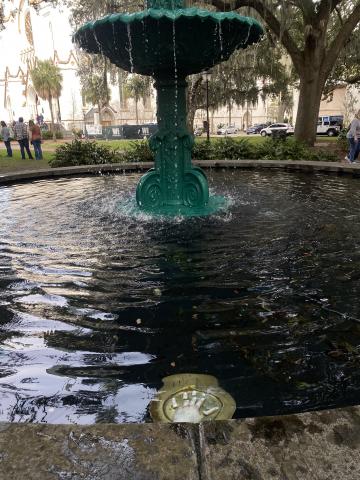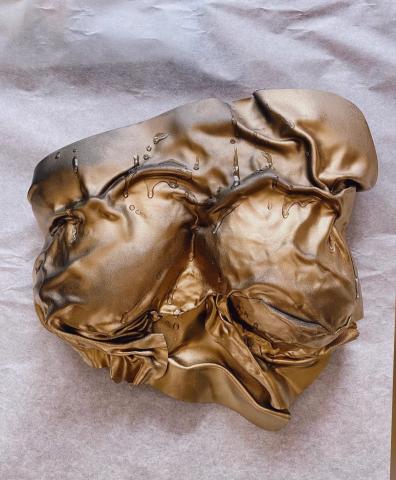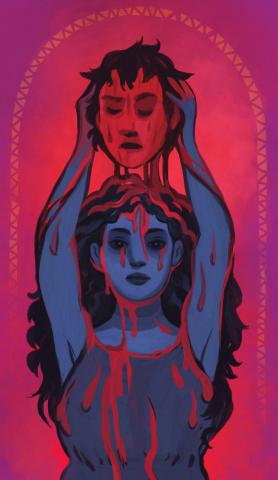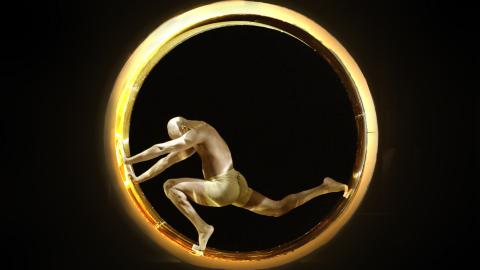Nina Papathanasopoulou
December 22, 2022
The Ancient Worlds, Modern Communities initiative (AnWoMoCo), launched by the SCS in 2019 as the Classics Everywhere initiative, supports projects that seek to engage broader publics — individuals, groups, and communities — in critical discussion of and creative expression related to the ancient Mediterranean, the global reception of Greek and Roman culture, and the history of teaching and scholarship in the field of Classical Studies. As part of this initiative, the SCS has funded 149 projects, ranging from school programming to reading groups, prison programs, public talks, digital projects, and collaborations with artists in theater, opera, music, dance, and the visual arts. To date, it has funded projects in 29 states and 15 countries, including Canada, the UK, Italy, Greece, Spain, Belgium, Ghana, Puerto Rico, Argentina, and India.
Many of the projects currently funded by AnWoMoCo center on exploring and reimagining ancient texts through modern interpretations; through video, song, visual art; and through video games. This post focuses on three such projects: a music video series that recreates the Homeric Hymns for the 21st century; Classical Connections, an initiative that highlights the significance of ancient myth through contemporary adaptations, both literary and artistic; and an interactive game based on Euripides’ tragedy, Bacchae. All of them provide opportunities for rethinking the past and for employing it as a framework to deal with current issues.
Hymns: Music Video Adaptations of the Homeric Hymns by Four Larks
Interested in igniting a conversation about the applicability of Ancient Greek mythology and poetry to the contemporary world, Four Larks, a company making original performance work at the intersection of theatre, music, visual art, and dance, received funding from AnWoMoCo to cover final edit and post-production costs for their newest project, Hymns. Hymns is an interdisciplinary project created by a team of musicians, artists, designers, and performers primarily based in Los Angeles. It combines folk, pop, and orchestral music with dance, theater, and digital art in a series of music videos adapted from the Homeric Hymns. The videos attempt to create a modern analogue to ancient song performance while applying a 21st-century lens to the deities of the Hymns in order to address anxieties and issues of our own age.
In creating the music for Hymns, writer, director, and composer, Mat Sweeney sought “to put the texts of the Hymns in conversation with other modalities of devotional song, to trace a tapestry of praise music traditions extending from Ancient Greece to contemporary Los Angeles.” The songs, arranged in collaboration with the ensemble of instrumentalists, include contributions from songwriter Ellen Warkentine and lyricist Jesse Rasmussen. For the creation of the videos, Sweeney worked with producer, designer, and movement director Sebastian Peters-Lazaro and filmmaker Christin Turner. The initial dramaturgical research and development process included scholars and curators from the Getty Villa. Each of the hymns incorporates fragments of the original Homeric texts, which were selected and recited with assistance from students and faculty from the Classics Department at UCLA.
The visuals for Hymns were shot during the pandemic by a small crew at a nearly empty Getty Villa, over the course of five days in January 2022. After a preliminary editing process, Hymns was previewed by the Getty Villa online, as a part of their work-in-progress theater lab series, for two weeks. Four Larks is now arranging to screen the complete version of Hymns at live film and performance festivals. They will thereafter make them available online for the public at large. A preview clip for Hymn to Dionysus, the Liberator here.
For Sweeney and his team, these new Hymns follow the function of the ancient hymns and aim to engage the community in meaningful ways:
This new hymnal borrows from the surviving fragments and the corresponding pantheon of Greek deities to address our most urgent concerns. Specifically, these new hymns celebrate collective action and the power of group resistance; they call for the protection of mother earth and the powerful female deities who govern her cycles; they praise curiosity and scientific inquiry; they ward against tribalism and isolationism; and they exalt diversity and hospitality. In this moment, where certain historiographical terrorists seek to impose a straight and exclusive hereditary line from the ancient Greeks to an imagined “white” cultural identity, we seek to emphasize the inherent cultural exchange embedded in these texts. Concepts, characters, and wording in the original hymns can be traced to narrative poetry across earlier civilizations in Africa and Asia, and they continued to evolve in later adaptations across farther seas in subsequent centuries. In this way, the hymns remind us of the impossibility of isolated authorship or cultural superiority. In this spirit, we assembled a collaborative team of performers, dancers, instrumentalists, and singers that could offer a diverse spectrum of perspectives on the work as it developed.
To stream the songs in full, click here. To learn more about the project, visit the Four Larks website.


Classical Connections: Mythic Women / Modern Incarnations
Emily Waller Singeisen is also interested in highlighting the relevance and importance of classical literature in our modern times. Waller Singeisen recently completed a Master of Liberal Arts degree on psychoanalytic approaches to the ancient novel at the University of Pennsylvania. Waller Singeisen, together with installation artist Ali Waller, conceived of and created an initiative called Classical Connections. Consisting of various in-person and digital events, Classical Connections aims not only to increase public engagement with the Classics, but also to spotlight contemporary adaptations, receptions, and approaches to classical texts at a time when the field is regarded by many as outmoded and insular.
With funding from AnWoMoCo, Classical Connections will host its inaugural event, titled “Mythic Women / Modern Incarnations,” in Savannah, Georgia at the end of December. As Waller Singeisen describes it, the event reimagines the role of mythic women for our contemporary world, with particular emphasis on the reclamation of these mythic women’s bodies from the violent narratives that have traditionally defined them. The event will feature a public art installation by Waller accompanied by a public lecture by Waller Singeisen. The art installation will exhibit plaster casts embossed with passages from ancient texts and their modern receptions, with a specific focus on the female body. The lecture will focus on mythical women such as Medea, Penelope, and Cassandra, and it will discuss the transformation of the female body in Greek and Roman mythology. It will consider the ways in which women subject to violence and involuntary transformation have come to symbolize resilience and strength in contemporary feminist receptions. Spotlighted modern works will include Anne Carson’s refashioning of Helen in Norma Jeane Baker of Troy, Judith Butler’s revolutionary vision in Antigone’s Claim, and Hélène Cixous’s Laugh of the Medusa. By discussing these textual works in the context of the art installation, the event is intended to bring the myths to life in a compelling way, while also making their feminist receptions more approachable, understandable, and relevant to the local community.

To engage the local community of Savannah in this event, Waller is displaying one of the exhibition artworks, “Persephone’s Hand,” in LaFayette Square in the center of town. Waller Singeisen explains how the art piece calls attention to Persephone’s experience in the myth of her abduction and transformation through a visual representation of her hand:
Art pieces are placed in different parts of town alongside works of literature that retell the myths through a modern lens. “Persephone’s Hand” is thus accompanied by copies of Mary Shelley’s Proserpine (Persephone’s Roman name), which retells the story from the perspective of her mother, emphasizing the unique bond between communities of women amidst patriarchal violence.

Enthralled: An interactive educational game based on Euripides’ Bacchae
Enthralled is an interactive game created by Katerina Zacharia, Professor of Classics and Chair of Classics & Archaeology at Loyola Marymount University (LMU), and Marientina Gotsis, Professor of the Practice of Cinematic Arts at the University of Southern California (USC). Zacharia and Gotsis developed this game in both analog and digital format by drawing on the values and narrative of Euripides’ Bacchae. The game asks participants to judge and vote on the motivations of the dramatic characters. In the current, third version of the game, players are organized into teams and receive an adapted role-playing script with seven scenes based on Euripides’ Bacchae, an original deck of cards with two to four central character responses for each scene (22 cards), a character sheet, instructions, ballots, and scoring materials. A game moderator is assigned to each team. Players take turns reading parts of the script with their team members. At the end of each scene, one dramatic character asks another a key question. A player draws a card corresponding to the scene and reads the answer aloud. This answer may or may not correspond to the original narrative in the Bacchae. The players are asked to vote on whether the judged character is an enthralled devotee or an irreverent fool and to select a rationale for their vote (e.g., faith in the supernatural). The moderator tallies the votes and informs the players if they have reached a supermajority and if they converged on the rationale for the dramatic characters’ actions. The game is replayable to allow for broader and deeper engagement.

Enthralled aims to enhance group reflection and collaboration, reward consideration of others’ viewpoints, and explore the fine line between fact and belief. It was playtested with LMU undergraduate students in Spring and Fall 2022, when Zacharia and Gotsis had the opportunity to conduct a formal evaluation of the courses and game. After looking at measures of interest and enjoyment, value and usefulness, and perceived competence, and collecting additional data from open-ended surveys, the collaborators report that the study results exceeded their own expectations.
To create the game, Zacharia and Gotsis had to branch out into each other’s disciplines and pedagogical methods. They explain:
At the intersection of Classics and interactive media, our transdisciplinary collaboration has required intensive immersion into each other’s scholarship, methods, and pedagogy in order to learn from one another, experiment, jointly develop an original new work, and bring knowledge back into our own disciplines.
Enthralled received intramural funding from LMU towards the development and evaluation of the interactive game project. AnWoMoCo funding was applied to develop an online platform required to operate the interactive game in its second iteration, and to hire a graphic artist to design the deck of cards for the analog game in its third iteration.
Zacharia and Gotsis will give a lighting talk entitled “Creativity, Collaboration, Interactive Entertainment & Greek Tragedy” during the SCS 2023 annual meeting in New Orleans.
For more information on the game, please contact Zacharia at katerina.zacharia@lmu.edu.
Authors


